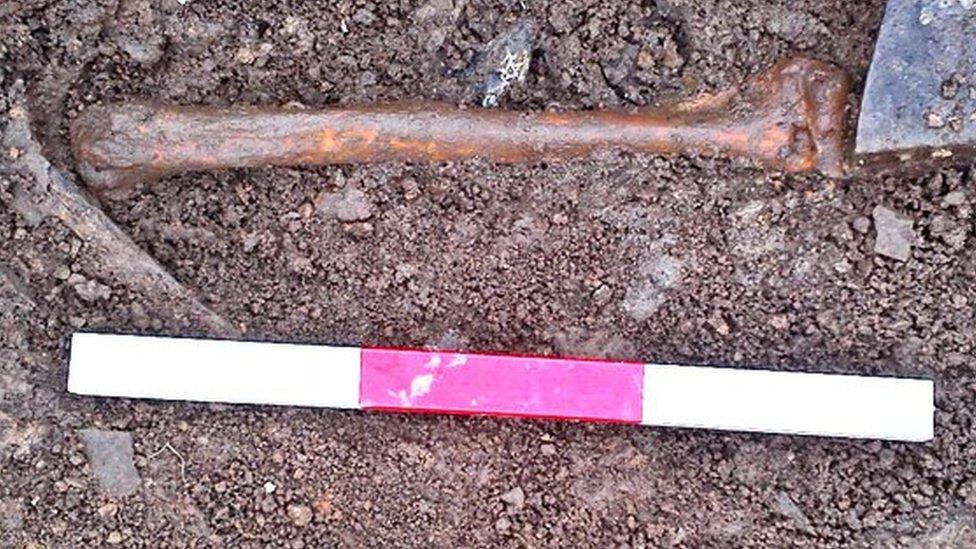Archaeologists find human arm bone at Ness of Brodgar in Orkney
- Published
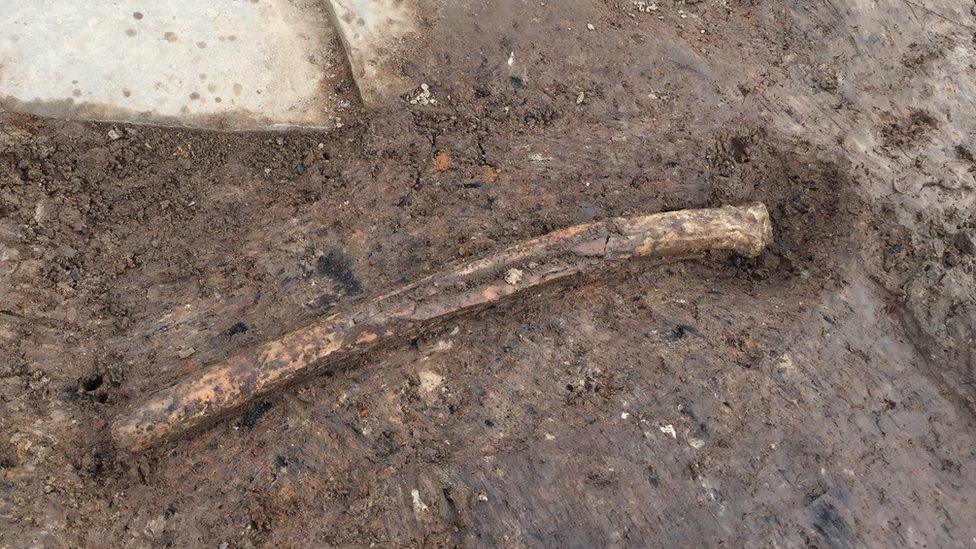
The bone seems to be from the lower arm - perhaps from a young woman
Archaeologists digging at the Ness of Brodgar Nolithic site in Orkney have found a human arm bone.
It's unusual - because not many human remains have been found there.
It's important - because it should help experts understand more about the people who lived there 5,000 years ago.
And it's intriguing - because it seems to have been deliberately placed under a wall.
The remains were found in what is called structure 10, a "temple-like" building on the site.
Dr Jo McKenzie from the University of Bradford, told BBC Radio Orkney that it seems to have been rebuilt, possibly multiple times, in pre-history.
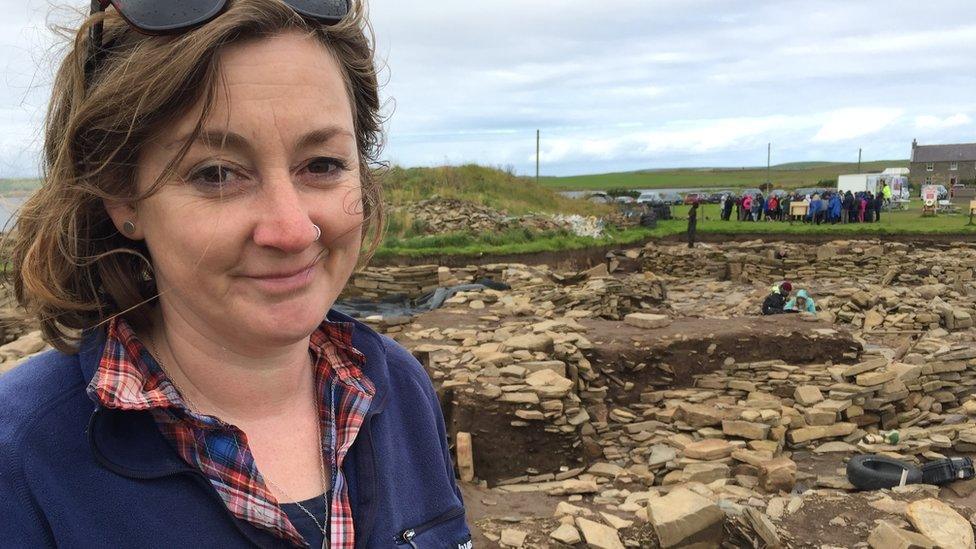
Dr Jo McKenzie from the University of Bradford has been supervising excavations in structure ten - where the bone was found.
"The area that we're working in now, we're basically taking off the last remnants of the re-modelling.
"And Charlie and I were just removing one of the last slabs, and I could see a tiny part of what looked suspiciously human."
Charlie is Charlie Scovell, an archaeologist from London who is working as a volunteer at the Ness over the summer. He described the excitement generated by the discovery.
"You kind of have a little thought in your head 'wait a minute, this is something special, or important'.
"Then all of a sudden it's very clear, and the powers-that-be come over, and they say 'be careful, and take lots of pictures'."
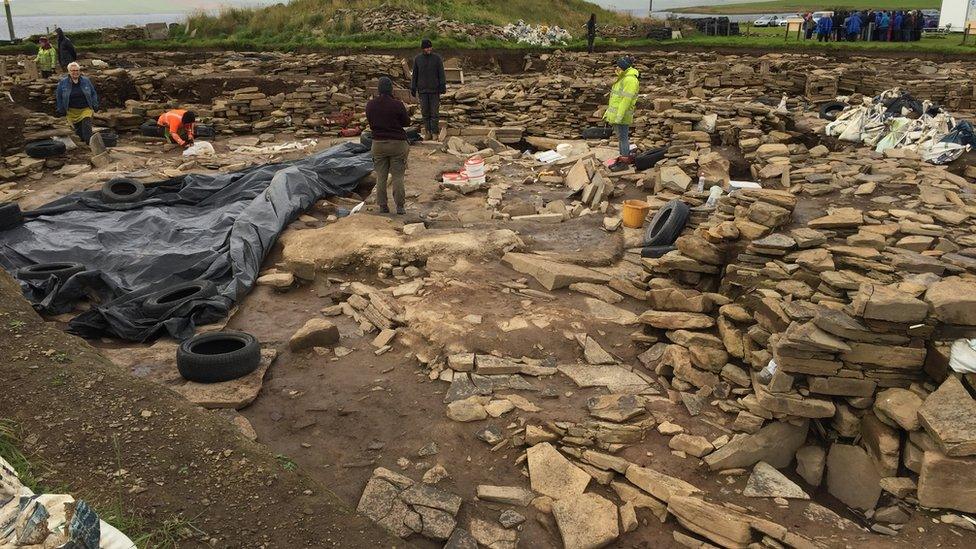
Two months of excavation work at the Ness of Brodgar will come to an end this week
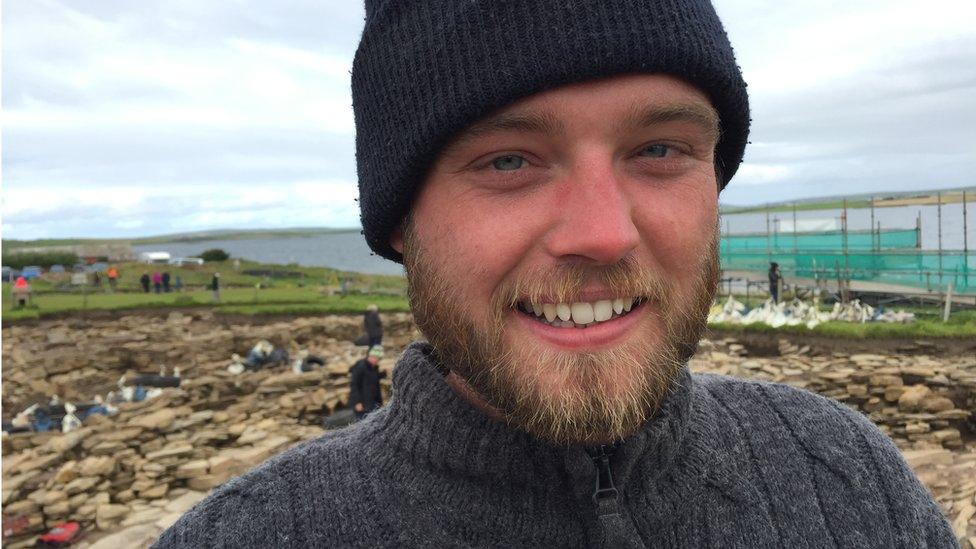
Charlie Scovell was one of the archaeologists who found the human arm bone. He says a buzz went round the site as news of the discovery spread.
The "powers-that-be" means site director Nick Card. He says the bone - which is between eight and nine inches long - seems to be from the lower arm, possibly of a young woman.
"We're in the process of fully recording it, creating 3D models of it, doing lots of photography, in between reporting it to Police Scotland. It's human remains, so despite the fact that it's probably about 5,000 years old the police always want to find out about these things."
He says he can't speculate about the woman whose arm this was "until the human bone specialists have had a look at it".
But what's already clear is that this doesn't look like a conventional burial. Three years ago, archaeologists found another human arm bone - perhaps from the same woman. Like this latest find, it too seemed to have been carefully placed in the foundations of a wall.
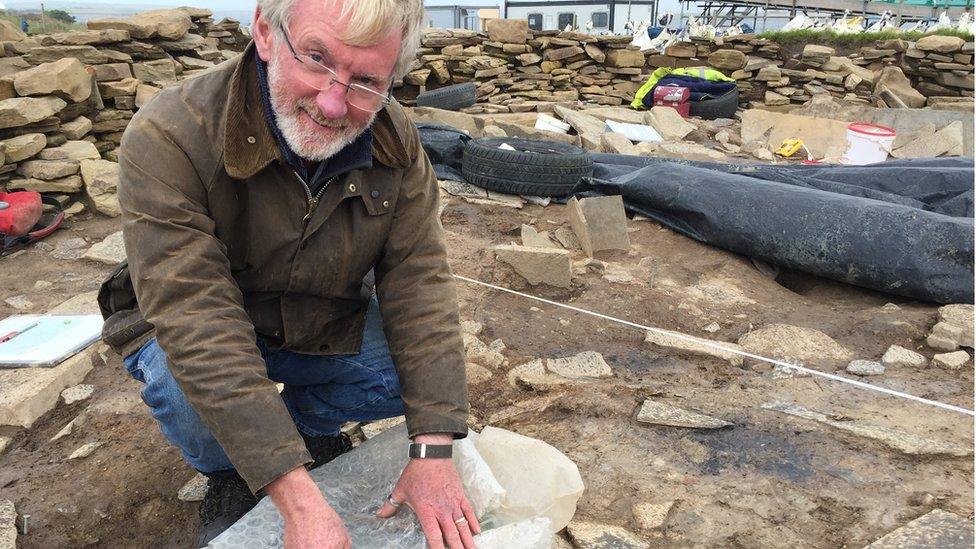
Nick Card is site director at the Ness of Brodgar
"There have also been several large leg bones from cattle", Nick Card said, "and other objects such as a big decorated stone, and some very unusual pottery. So this all seems to have been a kind of votive deposit."
In other words, an offering or some kind of dedication deliberately placed under the wall as part of the rebuilding works.
Dr McKenzie says the find opens up a whole range of new questions to ponder.
"It makes you stand back and think about the structure and what we're excavating, and what the actual placement of the material meant to them.
"And looking wider, at the Ness of Brodgar we've found very few human remains. So they have great significance in that sense as well."
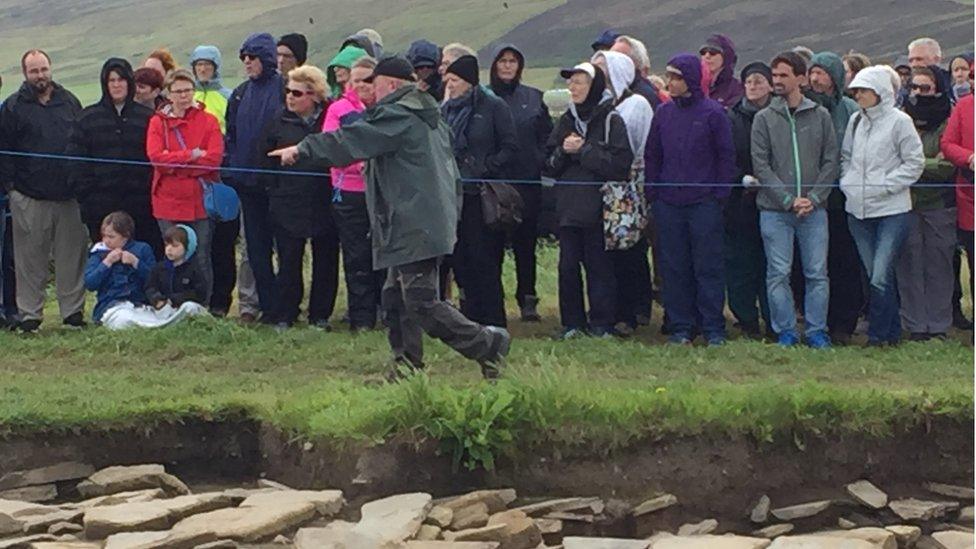
Over the summer, tours at the Ness of Brodgar have attracted crowds to see the site
It is hoped that analysing the bone will reveal more details about the woman - her height and age, health at the time she died, and even her diet.
And DNA testing should confirm if the two arm bones found a few years apart came from the same person. Dr McKenzie says "finding it is just the start".
For Charlie Scovell, being involved in such a significant find rates as an "easy 10 out of 10" because of "the specialness of the place, and the type of archaeology that we're doing. I'll be telling people about it forever, I think".
- Published18 July 2019
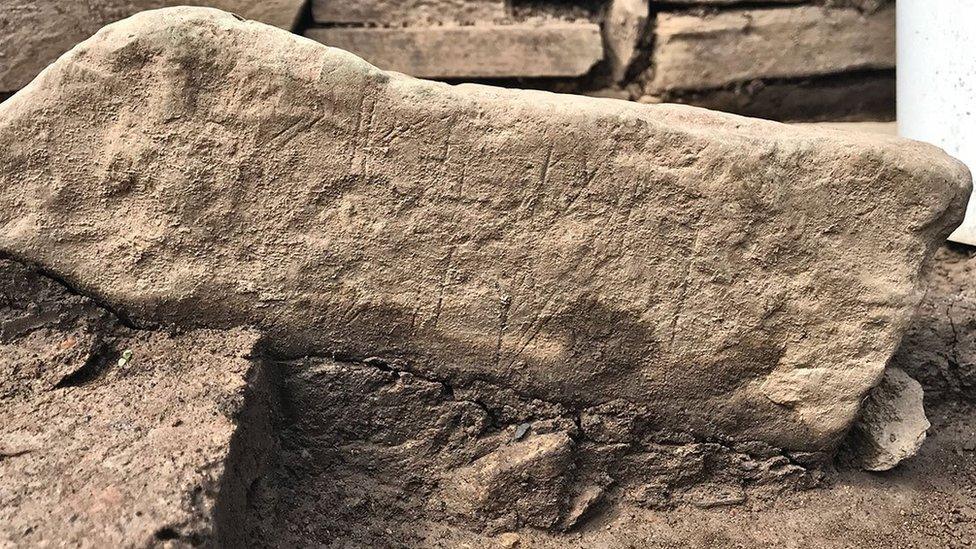
- Published11 April 2019
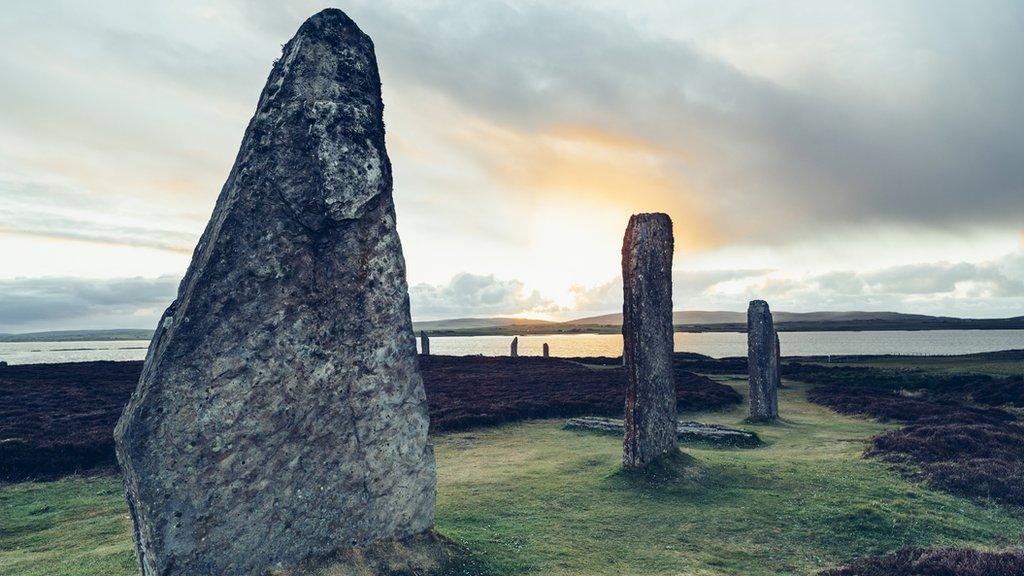
- Published21 July 2016
